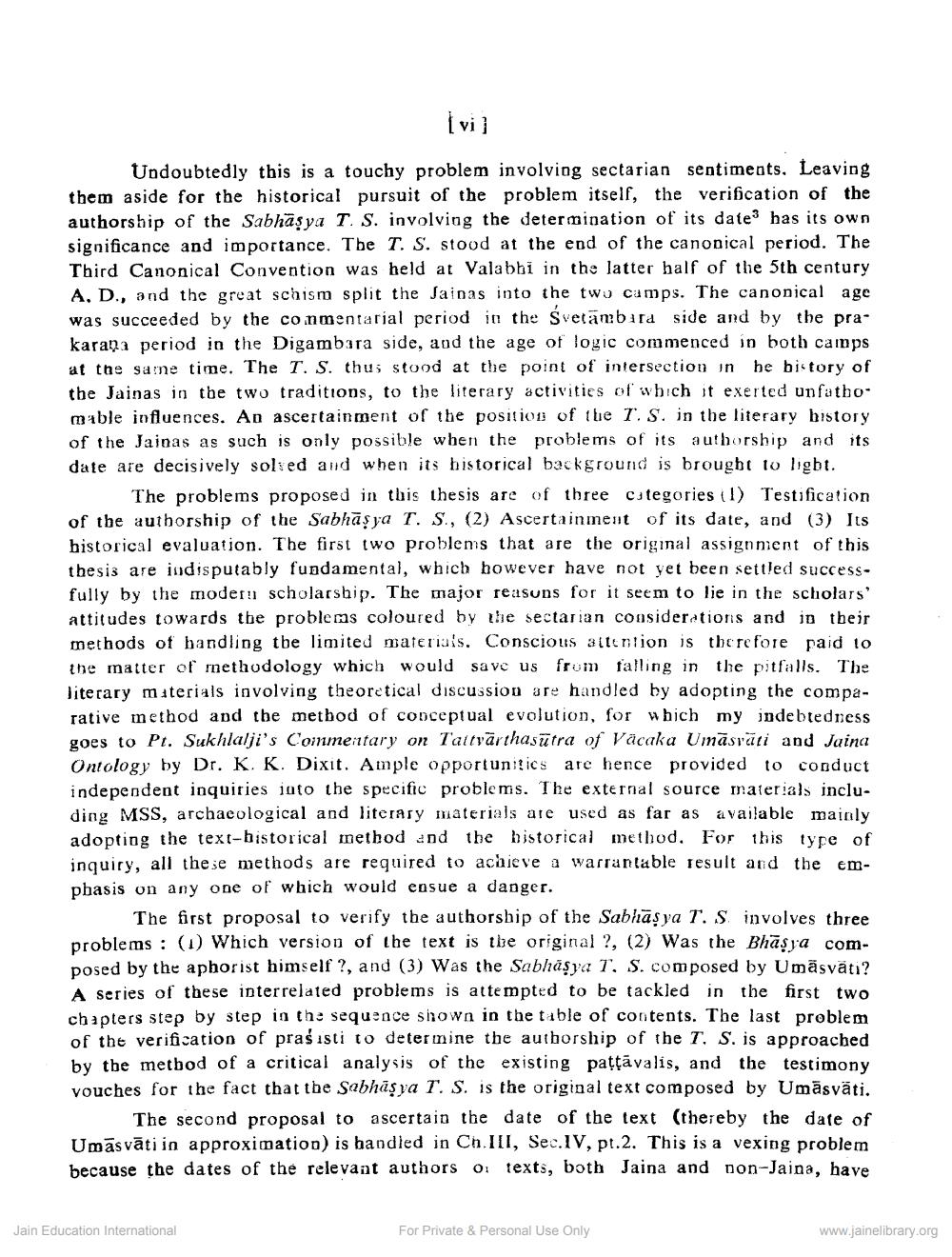Book Title: Study of Tattvarthasutra with Bhasya Author(s): Suzuko Ohira Publisher: L D Indology Ahmedabad View full book textPage 7
________________ (vi) Undoubtedly this is a touchy problem involving sectarian sentiments, Leaving them aside for the historical pursuit of the problem itself, the verification of the authorship of the Sabhāşya T. S. involving the determination of its dates has its own significance and importance. The T. S. stood at the end of the canonical period. The Third Canonical Convention was held at Valabbi in the latter half of the 5th century A.D., and the great schism split the Saidas into the two camps. The canonical age was succeeded by the commentarial period in the Svetambura side and by the prakarana period in the Digambara side, and the age of logic commenced in both camps at the same time. The T. S. thus stood at the point of intersection in he bistory of the Jainas in the two traditions, to the literary activities of which it exerted unfathomable influences. An ascertainment of the position of the T. S. in the literary history of the Jainas as such is only possible when the problems of its authorship and its date are decisively sol:ed and when its historical background is brought to ligbt. The problems proposed in this thesis are of three cutegories (1) Testification of the authorship of the Sabhāsya T. S., (2) Ascertainment of its date, and (3) Its historical evaluation. The first two problems that are the original assignment of this thesis are indisputably fundamental, which however have not yet been settled successfully by the modern scholarship. The major reasuns for it seem to lie in the scholars' attitudes towards the problems coloured by the sectarian considerations and in tbeir methods of handling the limited materiais. Conscious attention is therefore paid 10 the matter of methodology which would save us from falling in the pitfalls. The Jiterary materials involving theoretical discussion are handled by adopting the comparative method and the method of conceptual evolution, for which my indebtedness goes to Pt. Sukhlalji's Commentary on Tattvärthasūtra of Väcaka Umāsvāti and Jaina Ontology by Dr. K. K. Dixit. Ample opportunities are hence provided to conduct independent inquiries joto the specific problems. The external source materials including MSS, archaeological and literary materials are used as far as available mainly adopting the text-historical method and the historical method. For this type of inquiry, all these methods are required to achieve a warrantable result and the emphasis on any one of which would ensue a danger. The first proposal to verify the authorship of the Sabhäsya T. S involves three problems : (1) Which version of the text is the original ?, (2) Was the Bhāsja composed by the aphorist himself ?, and (3) Was the Sabhāşya T, S. composed by Umāsväti? A series of these interrelated problems is attempted to be tackled in the first two chapters step by step in the sequence shown in the table of contents. The last problem of the verification of prašisti to determine the authorship of the T. S. is approached by the metbod of a critical analysis of the existing pattāvalis, and the testimony vouches for the fact that the Sabhāsya T. S. is the original text composed by Umāsvāti. The second proposal to ascertain the date of the text (thereby the date of Umāsvāti in approximation) is handled in Cn.III, Sec. IV, pt.2. This is a vexing problem because the dates of the relevant authors 0: texts, both Jaina and non-Jaina, have Jain Education International For Private & Personal Use Only www.jainelibrary.orgPage Navigation
1 ... 5 6 7 8 9 10 11 12 13 14 15 16 17 18 19 20 21 22 23 24 25 26 27 28 29 30 31 32 33 34 35 36 37 38 39 40 41 42 43 44 45 46 47 48 49 50 51 52 53 54 55 56 57 58 59 60 61 62 63 64 65 66 67 68 69 70 71 72 ... 196
